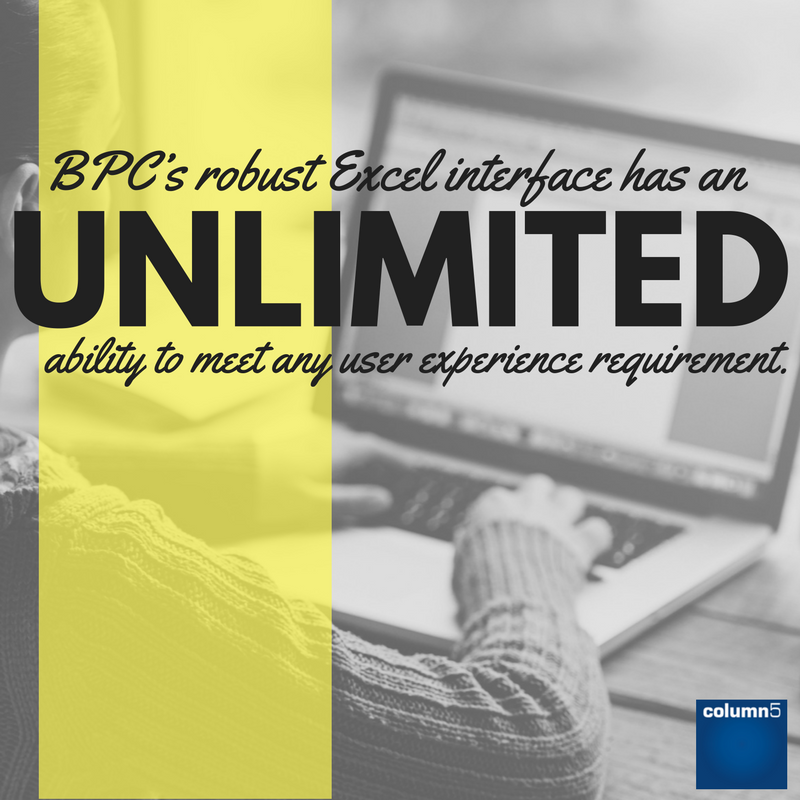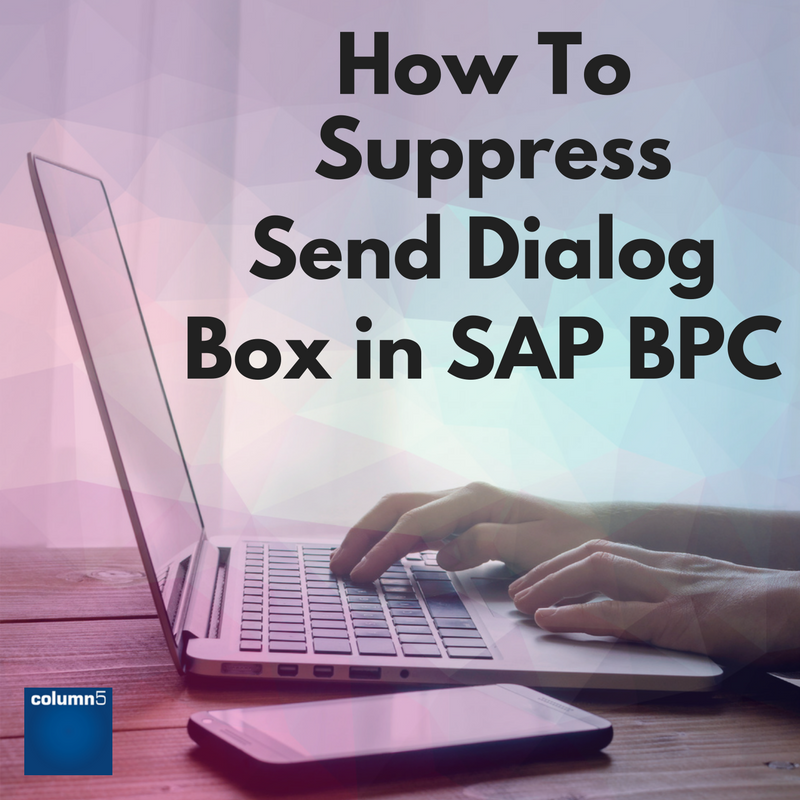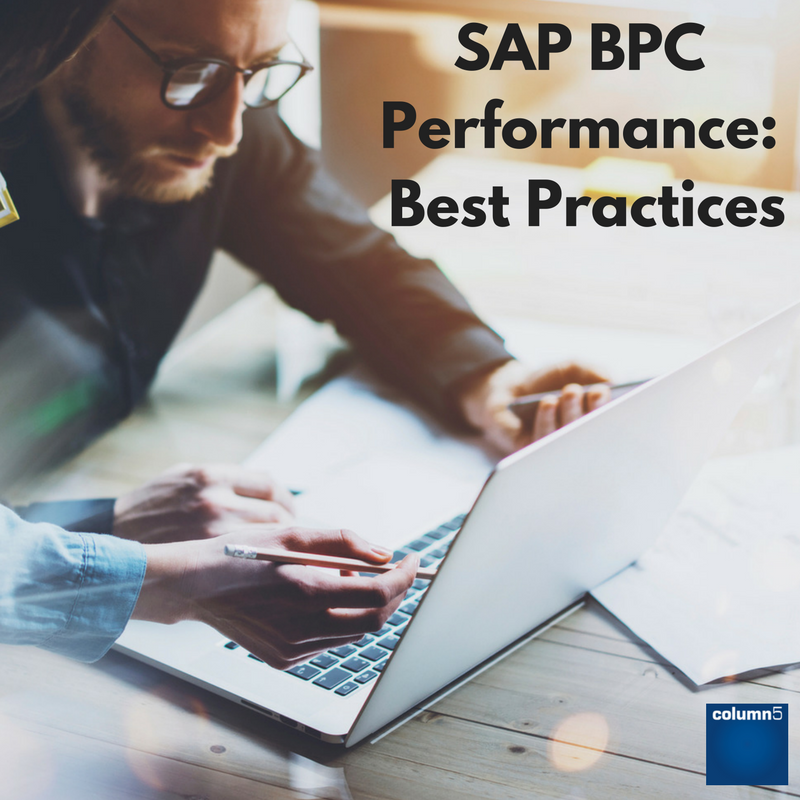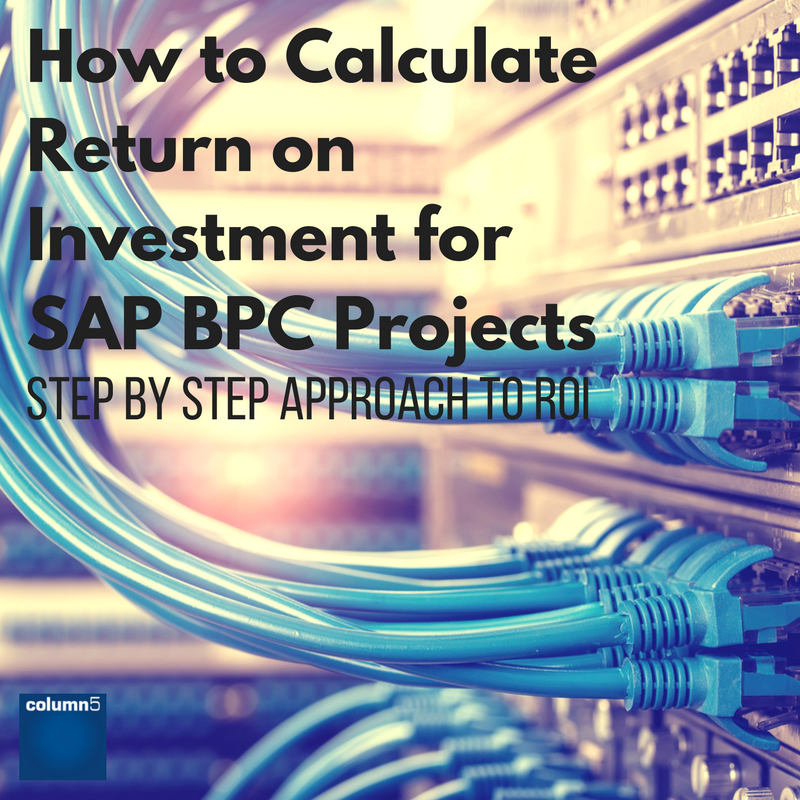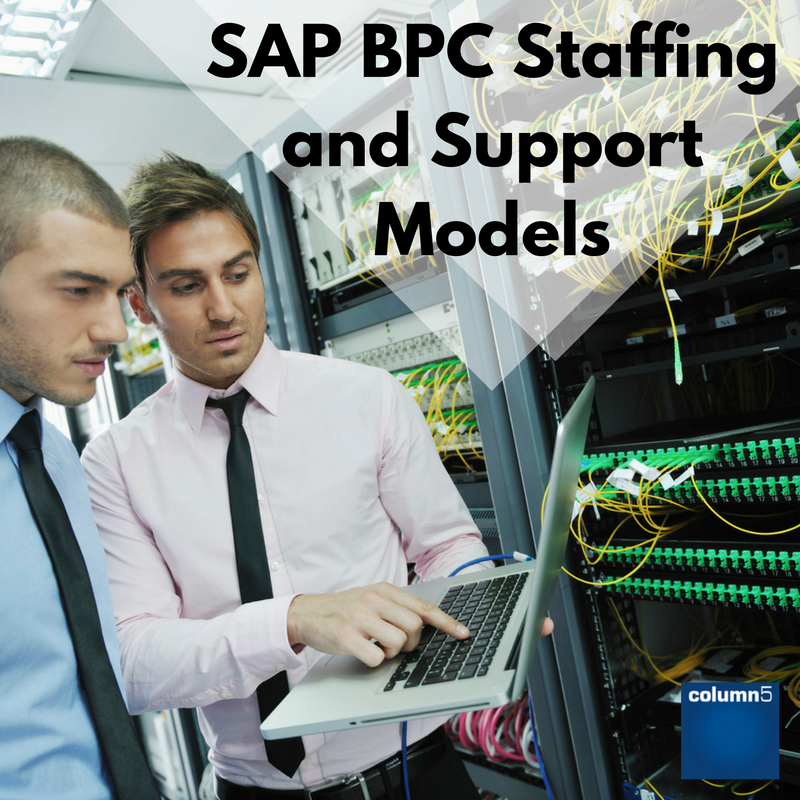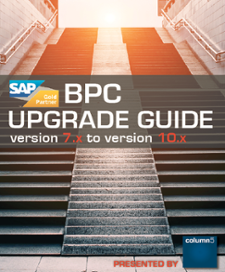When comparing BPC to other products, a big factor to consider is the user interface experience. SaaS based
EPM solutions often have significant constraints to the available options when designing the experience users will
interact with, due to the inherent design limitations of those solutions. BPC’s robust Excel interface has an unlimited ability to meet any user experience requirement. In addition to the significant numbers of Excel functions included in the EPM Add-in that can be applied creatively to meet any need, sometimes it is necessary to leverage Visual Basic to create highly specific behavior in the interface.

SAP Analytics
Thought Leadership
Topics: Excel, BPC (Business Planning & Consolidation), best practices for epm, API, VB
BPC has always been a flexible tool with many “hooks” through Excel and the database layer enabling all manner of customizations to increase usability to customers’ exact specifications. The risk of customizing is the potential of that customization being an impediment to an upgrade. One popular access point provided by SAP/OutlookSoft was the “MNU_Commands” hook.
Topics: Thought Leadership, BPC (Business Planning & Consolidation), best
Column5 and I have seen a lot of things over the years in the EPM space. I have been working on the technical side of BPC MS since 2000, BPC NW since 2007, and BPC NW on HANA since 2012, having implemented it around the world over 1000 times.
I have a dream to, at some point, write a book of everything I have seen over the years. If investors knew what was really going on deep within some of the world’s datacenters, I think some heads would be rolling! I won’t mention ANY NAMEs but some of them are the who’s who of worldwide companies!
I keep running into the same thing over and over and over again, whether it is hosted by a 3rd party or implemented on-site at a client. The challenges start with a common element that is surprisingly easy to fix: No one seems to take care of the servers and technology!
Topics: Best Practices, Performance, BPC (Business Planning & Consolidation)
How to Calculate Return on Investment for SAP BPC Projects
We know that EPM (and specifically SAP BPC) implementations have the potential to be very profitable, more so than other IT projects like ERP implementations. But how do you prove that?
This blog takes a step by step approach to building a solid business case for a SAP BPC implementation. There are many intangible benefits to an EPM project which are difficult to put a value to, but we can set out all the costs and calculate a large part of the benefits. Even without adding in the intangible benefits, such as improved data quality, higher management efficiency and faster decision making, BPC projects can still be very profitable projects, so let’s go through the business case elements step by step.
Topics: Best Practices, Thought Leadership, Enterprise Performance Management (EPM), EPM ROI, BPC (Business Planning & Consolidation)
Whether you already have an existing BPC environment or are planning a new one, how to appropriately staff and support your EPM environment is a big question to tackle early on. While the number of FTEs will greatly differ based on the size or your organization, the complexities of your planning process, and the level of automation you invest in upfront, there are some basic skillsets you should address.
Topics: Process Improvement, Thought Leadership, Enterprise Performance Management (EPM), BPC (Business Planning & Consolidation)
The Integrity of Data Entered into SAP BPC via Input Schedules
SAP BPC systems receive data from a range of external sources. The planning and configuration necessary to insert this data into the system is an important aspect of an implementation. The integrity of data is vital, and invalid data can affect processes within SAP BPC, such as calculations and reporting. Safeguards should be in place to prevent the entry of invalid data.
The main methods employed to enter external data into a SAP BPC system are:
- Interfaces to source systems such as an ERP or SAP BW system.
- Flat file uploads.
- Input schedules for manual data entry.
The first two sources – interfaces and flat files – are tested, configured, and operated by experienced administrators and consultants who understand the data structures of source systems and SAP BPC, so these usually do not create problems. The greatest risk is with data entered through input schedules by users who, whilst knowledgeable about the commercial functions of their organisations, are not experts in the data structures of financial information systems like SAP BPC. The techniques available to ensure the integrity of data entered via input schedules are the focus of this article.
Topics: Thought Leadership, Enterprise Performance Management (EPM), Data, BPC (Business Planning & Consolidation)
When upgrading to BPC 10.x, many companies are curious about what new features will become available to them. Besides being quicker, more stable, etc., there are three new features that Column5 believes are worth the upgrade.
Topics: Best Practices, Thought Leadership, Enterprise Performance Management (EPM), Project Management, EPM 10, BPC (Business Planning & Consolidation)
A key component of an effective reporting strategy is the ability to get data to users when, where, and how they need it to make better decisions. For many users in today’s technology-driven world, that means mobile devices are a critical part of the overall reporting strategy.
Topics: Best Practices, Thought Leadership, Enterprise Performance Management (EPM), EPM 10, BPC (Business Planning & Consolidation)
While working with clients to deliver EPM capabilities, we have all heard about how it is critical to have good EPM business processes in place within an organization. I would say that I totally agree with an earlier Column5 blog post, “The Process is King”. Clearly documented business process models assist organizations to align operations to their strategy, promote better communication, improve existing practices, establish control and consistency, and even gain competitive advantage.
Topics: Best Practices, Process Improvement, Thought Leadership, Enterprise Performance Management (EPM), BPC (Business Planning & Consolidation)
Why EPM Checklists, Methodologies, and Fast Start Templates Ensure Success
Column5 CEO David Den Boer once told me, “Behind every checklist there is a dead body. “ As a military veteran, he knew that safety procedures were often put in place in the aftermath of a tragic accident that unfortunately involved the loss of life. The military is well known for their rigor, strict definition of procedures, and processes that deliver consistent and repeatable results. Isn’t that what we all strive for in delivery of our EPM projects? You can accomplish this result without enduring fatalities along the way.
Topics: Best Practices, Enterprise Performance Management (EPM), Project Management, BPC (Business Planning & Consolidation)
Subscribe
Recent Posts
Posts by Topic
- Enterprise Performance Management (EPM) (93)
- BPC (Business Planning & Consolidation) (75)
- Best Practices (51)
- Performance (49)
- Thought Leadership (47)
- Implementation (35)
- Process Improvement (27)
- Training (25)
- Value (25)
- EPM (19)
- Project Management (19)
- Data (16)
- Excel (16)
- BPC (15)
- Roadmap (14)
- sap bpc (14)
- User Experience (12)
- Analytics (11)
- EPM ROI (11)
- Center of Excellence (10)
- Financial Information Management (10)
- Microsoft (10)
- Business Intelligence (BI) (8)
- Cloud (8)
- EPM 10 (8)
- Forecasting (8)
- HANA (8)
- best practices for epm (8)
- Darwin EPM (6)
- Innovation (6)
- NetWeaver (6)
- Technical (6)
- best (6)
- EPM Maturity (5)
- Financial Close (5)
- sap (5)
- BPC11 (4)
- Consolidation (4)
- EPM Add-in (4)
- Executive (4)
- Product Focused (4)
- SO - BPC v10.x (4)
- SO - BPC v11.x (4)
- epm summit (4)
- technology (4)
- xp&a (4)
- Analysis Office (3)
- BPC NW – Embedded (3)
- BPC logic (3)
- BPC planning Master Data and Data Structure (3)
- BPCv10 embedded (3)
- Case Study (3)
- EPM Roadmap (3)
- Extended Planning & Analysis (xP&A) (3)
- OutlookSoft (3)
- SAC (3)
- group reporting (3)
- reporting (3)
- #EPMInnovation (2)
- AISuccess (2)
- API (2)
- Analytics Cloud (2)
- BPC 11, Version for BW/4HANA (2)
- DarCE (2)
- EPM Landscape (2)
- Epm Academy (2)
- FUTURE OF SAP BPC (2)
- Functional (2)
- Performance Tuning (2)
- SAP Analytics Cloud (2)
- SAP HANA (2)
- SO - BPC v7.x (2)
- SO - Functional Track (2)
- SaaS (2)
- Services Focused (2)
- Upgrade (2)
- analytics tune up (2)
- tuneup (2)
- Analysis plug-in v2.7 for Office (1)
- BFC (1)
- BPC Alternatives (1)
- BPC Lifeline (1)
- BPC PLUG-INS (1)
- BPC v10 upgrade (1)
- BW (1)
- CPM (1)
- Capital planning (1)
- EPM & Analysis plug-ins (1)
- EPM Investment (1)
- EPM events (1)
- Embedded (1)
- Extended Support for SAP BPC (1)
- Investment Comparisons (1)
- Rapid Deployment Systems (1)
- SAP BFC Migration (1)
- SAP BPC Technical Issues (1)
- SAP EPM Add-in Crashing (1)
- SAP EPM Add-in Performance (1)
- SO - Executive Track (1)
- SO - Platform - Microsoft (1)
- SO - Technical Track (1)
- VB (1)
- webcast (1)
3 S T E P S
To Enhance Your EPM Performance:
1.Get Your Ultimate Guide to Improving SAP EPM Performance
Learn what could be contributing to your poor performance and how to diagnose common problems. Get tips that will empower you and your team to improve the performance of your system in order to get the most out of your SAP EPM Investment.
2. Test Your BPC Performance
Get a BPC performance report card and custom report to identify performance issues you may not even know you have.
3. Get Your EPM Assessment
Our assessment delivers a complete, best practice roadmap for you to follow. We’ll work together to assess what you need to pivot your financial forecasting, planning, reporting and analysis to handle the compressed requirements from the volatile COVID-19 environment.



